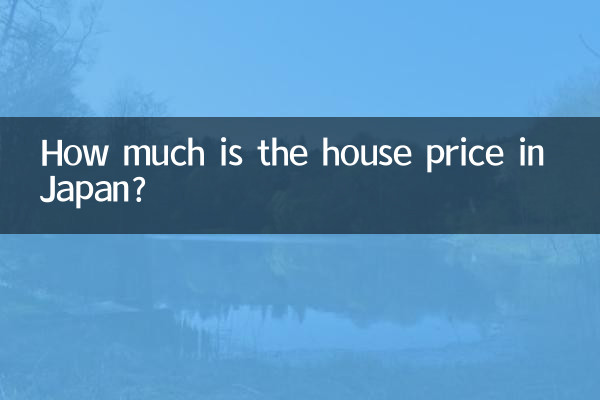How much are house prices in Japan? Analysis of the latest data and hot topics in 2024
In recent years, Japanese housing prices have become a focus of global investors and immigrants. This article will combine hot topics and structured data from the entire Internet in the past 10 days to provide you with a detailed analysis of the current situation, regional differences and influencing factors of Japanese housing prices.
1. Overview of the latest data on Japanese housing prices (2024)

| city/region | Average apartment price (yen/㎡) | Average price of a single-family house (Japanese yen) | Year-on-year change |
|---|---|---|---|
| Central Tokyo (23 wards) | 1,200,000 | 85,000,000 | +5.2% |
| Osaka city center | 750,000 | 55,000,000 | +3.8% |
| Kyoto | 680,000 | 48,000,000 | +4.1% |
| Fukuoka | 450,000 | 35,000,000 | +2.9% |
| Hokkaido (Sapporo) | 380,000 | 28,000,000 | +1.5% |
2. Focus on recent hot topics
1.Tokyo Olympics legacy effect: The Olympic Village renovated residential project "HARUMI FLAG" has become an investment hotspot, with an average price of 150 million yen per unit.
2.Foreign investors surge: Affected by the depreciation of the yen, overseas home purchases in Q1 2024 increased by 27% year-on-year, with mainland Chinese buyers accounting for 42%.
3.Rural property boom: The Japanese government has launched the "Pastoral Return Support Policy", with a minimum cost of 5 million yen for vacant house renovation projects.
3. In-depth data analysis
| Influencing factors | positive impact | negative impact |
|---|---|---|
| Japanese yen exchange rate | Improved value for money for foreign buyers | Decline in local purchasing power |
| Tourism recovery | B&B investment return rate rose to 6.8% | Controversy over commercialization of residential areas |
| Demographic structure | Increased demand for housing among foreign workers | The vacancy rate in local cities exceeds 13% |
4. House purchase cost details (taking a 70㎡ apartment in Tokyo as an example)
| project | Amount (Japanese yen) | Proportion |
|---|---|---|
| House payment | 84,000,000 | 89.4% |
| agency fee | 2,520,000 | 2.7% |
| registration tax | 1,050,000 | 1.1% |
| stamp duty | 480,000 | 0.5% |
| Fire and earthquake insurance | 320,000 | 0.3% |
5. Expert opinions and trend predictions
1.Core cities continue to rise: Tokyo and Osaka are expected to grow by 4-6% in 2024, mainly driven by the rebound in office demand and the inflow of foreign capital.
2.Local urban differentiation intensifies: Regional hub cities such as Fukuoka and Sapporo remain stable, but other regions may experience a 5-10% correction.
3.The rise of new housing models: The market share of shared ownership housing and long-term rental apartments is expected to increase from 3% currently to 15% in 2027.
Conclusion
Japan's housing prices show obvious polarization characteristics of "hot cities and cold places". For investors, Tokyo’s core areas are still the best value-preserving option, while owner-occupiers can focus on cost-effective housing in government-subsidized areas. It is recommended that you conduct an on-site inspection before purchasing a house and consult a professional tax advisor.

check the details

check the details